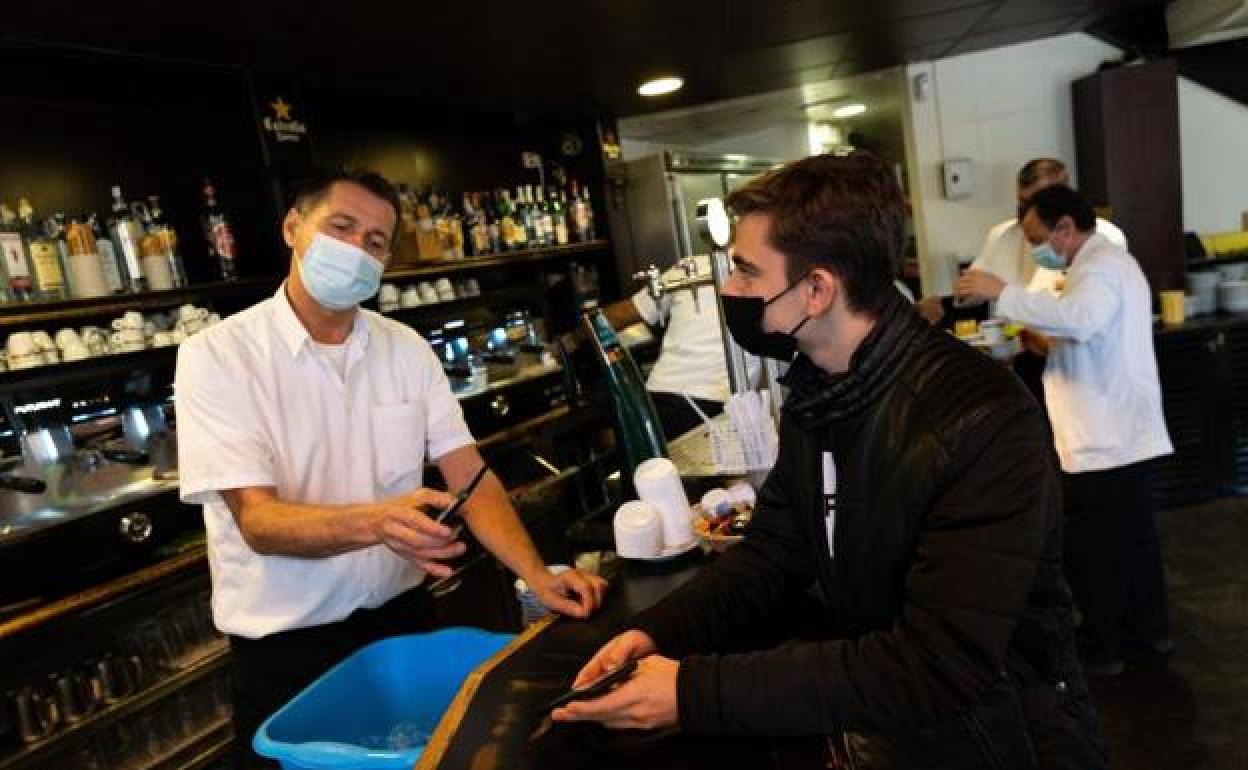

Sections
Highlight

ALFONSO TORICES
Thursday, 9 December 2021, 10:23
Compartir
The sixth wave of the coronavirus pandemic is already here, but it will not be until next week that the effect of the long ‘bridge’ holiday in Spain - with millions of extra trips and meetings – will be reflected in the country's Covid-19 infection and hospitalisation rates.
However, the indicators are already pointing to a Christmas on another crest of a pandemic wave. The data shows that Spain will soon be at a 'high risk' of Covid contagion - the third alert level of the four that exist.
In fact, the country is probably already in this situation, but it is not yet officially reflected by the Ministry of Health statistics, which have a delay in notifications.
The new 'Covid traffic light' system, approved at the end of November by the Ministry of Health and the regions, is much more demanding than the previous one. To move from one risk level to another, it is not enough to look only at the data on the incidence of the disease per 100,000 inhabitants, but it requires that the increase of infections translates into an increase in the admission of patients to hospitals and intensive care units.
Experts believe that Spain is ‘hours away’ from officially entering the high risk zone. And, if you only look at the incidence rate parameters, it is already. It only needs the healthcare pressure, which currently is at a medium risk rate, to worsen a little.
The incidence rate of infections is already 'high risk'. This is officially the case when at least two of the four factors taken into account by the traffic light system indicate it. The seven-day cumulative incidence exceeds the 150 cases per 100,000 inhabitants that mark the threshold (160.2), the same as the 14-day incidence rate of Covid in people over 65 years of age. In the 60 to 69 age range it is 299 and in the 70 to 79 age range it is 188.
The two remaining factors to head into the high risk zone are worsening fast. The 14-day cumulative incidence rate was 290 on Tuesday (7 December), but everything indicates that by the weekend, or earlier, it will exceed the threshold of the third level (more than 300). The same is indicated by the positivity rate, the percentage of confirmed infections in relation to the total analysed, which is at 8.42 per cent. The small jump to 10% or more will take it to the next alert level.
Hospitalisation rates, with 4.67 per cent of ward beds assigned to Covid patients and 10.29 per cent of intensive care unit beds occupied by coronavirus patients place healthcare pressure in the medium-risk band. However, the evolution looks bad in the short term. Both hospital admissions and the number of coronavirus patients in ICUs are growing at a rate of more than 30 per cent per week. So, unfortunately, the occupancy rates of 10 per cent and 15 per cent of both hospital areas, respectively, the percentages that mark the official entry into the high risk zone, are just a stone's throw away.
Spain, nationally, borders on the 'high risk' zone, but there are nine regions already at the health alert level; including three, Navarra, the Basque Country and Aragon, which have an incidence rate of Covid cases compatible with extreme risk. The last three are officially at 'high' and not 'extreme risk' only because their hospitalisation and ICU percentages have not yet reached the 15 per cent and 25 per cent that mark alert 4. The same happens with the Asturias, Balearic Islands, Castilla y León, Catalonia, Valencian region and Galicia, with high levels of contagion, but with medium hospitalisation rates.
Those who want to console themselves look to Europe, where the situation is much worse. Spain has the lowest infection rate after Romania and Sweden, similar to that of Italy, lower than Portugal, three times lower than that of the United Kingdom or Germany, five times lower than Austria and seven times lower than that of Belgium.
Publicidad
Publicidad
Publicidad
Publicidad
Reporta un error en esta noticia
Necesitas ser suscriptor para poder votar.